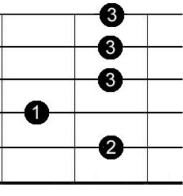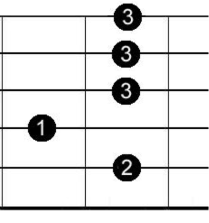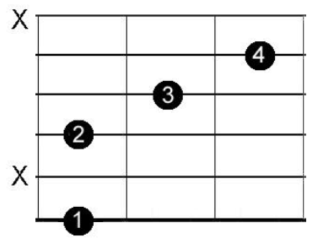From Blues To Jazz Guitar Chords: How To Play Jazz Blues
When you first learn to play blues chords, it’s normal to play basic blues riffs, chords and songs. However if we want to dive deeper into the world of blues guitar and explore other options and possibilities we’ll need to look at playing more ‘complex’ chords as well. Since these chords are also used in other styles such as jazz and soul, they will bring you sounds that you normally wouldn’t be able to produce. These chords can function as a substitution to our regular blues chords, which means that we can insert them anywhere in a typical blues progression, such as the regular 12 bar blues.
Adding Jazz Chords To a 12 Bar blues
There are many possible ways to play a 12 bar blues progression. We can change the dominant seven chord (such as the A7 chord) in various other chords (such as A9, A7#9, A13, etc.), depending on the function of the initial chord. Don’t get confused by the names of these chords, when you will learn them you will associate them with a certain sound and thereby link the name of the chord to this sound. In this way it will be possible to add a touch of jazziness to your blues rhythm playing or a soulfulness that you can’t get with normal blues chords.
In the next examples, we’ll start with a regular 12 bar progression and gradually add other chords. Let’s start of with changing the D7 and E7 chords to a D9 and E9 chord.
This is how you would play a D9 chord (with the root note on the 5th string):

5
D9
For the E9 chord we can simply transpose this fingering of the D9 chord two frets higher, as you can see in the chord diagram below.

7
E9
In the tab below you’ll see that we play a regular 12 bar blues, while replacing the D7 and E7 chord (as you would play in a regular 12 bar) with the D9 and E9 chords.
As you can hear this gives the overall feel of the 12 bar certain soulfulness.
In the next 12 bar we’ll play the same chords as in the last example, but this time we’ll substitute the A7 chord by the jazzy sounding A13 chord.
5
A13
This A13 chord is starting to send us in the direction of a jazz blues song. Once you know how to play a regular 12 bar blues, there’s much you can do to incorporate other sounds in your playing (like the soul and jazz sound that we started to touch on here) by replacing the original chords by chords such as the 9th chord and the 13th chord. While there are many more possibilities to explore, these two chords are the easiest to get into.
Learn How You Can Master Blues Guitar Playing







